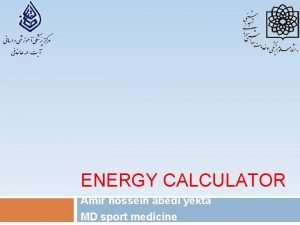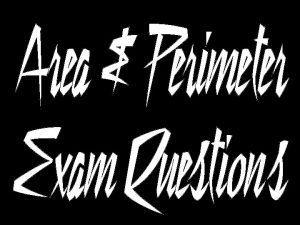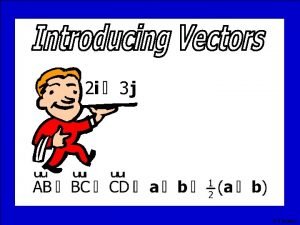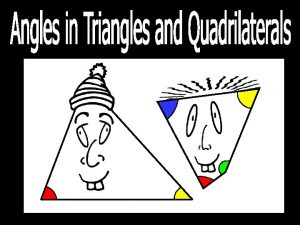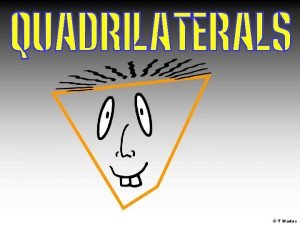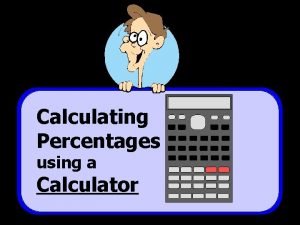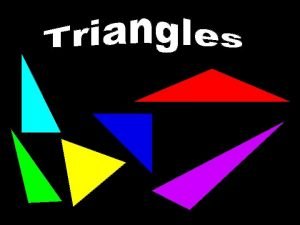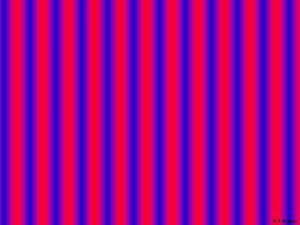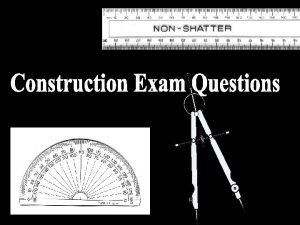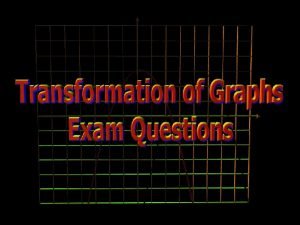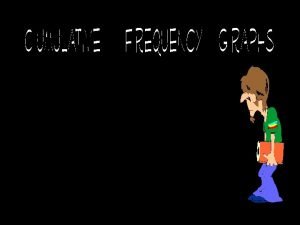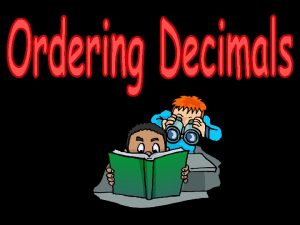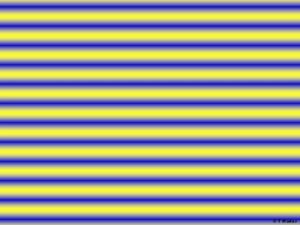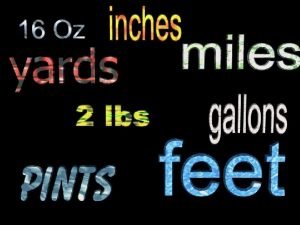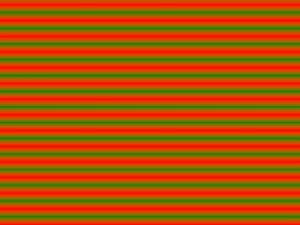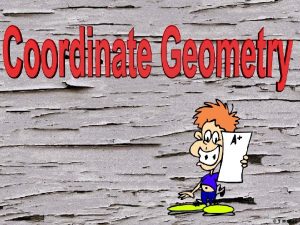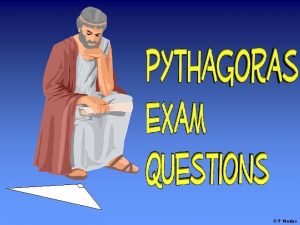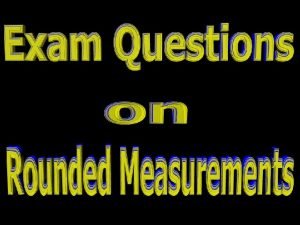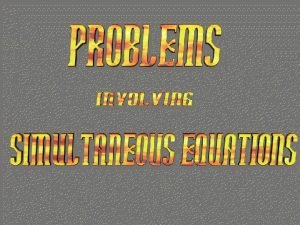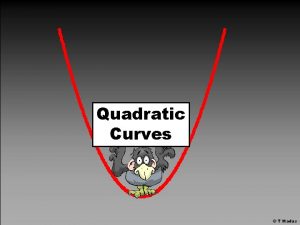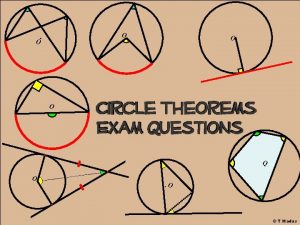T Madas What is 47 x 12 47



























- Slides: 27

© T Madas

What is 47 x 12? 47 x 10 = 470 47 x 2 = 94 564 470 or 47 x 12 = 47 x (10 + 2) 94 © T Madas

17 x 12 17 x (10 + 2) = 17 x 10 + 17 x 2 = 204 = 170 + 34 25 x 23 25 x (20 + 3) = 25 x 20 + 25 x 3 = 575 = 500 + 75 34 x 9 34 x (10 – 1) = 34 x 10 – 34 x 1 = 306 = 340 – 34 © T Madas

This property of numbers is very useful in algebra: 2 x ( a + b ) = 2 x a + 2 x b = 2 a + 2 b 3 x ( n + 2 ) = 3 x n + 3 x 2 = 3 n + 6 4 x ( a – 3 ) = 4 x a – 4 x 3 = 4 a – 12 © T Madas

This property of numbers is very useful in algebra: 2 ( p – q ) = 2 x p – 2 x q = 2 p – 2 q 6 ( y – 2 ) = 6 x y – 6 x 2 = 6 y – 12 4 (2 a + 5 ) = 4 x 2 a + 4 x 5 = 8 a + 20 © T Madas

The operation of removing brackets is called: “expanding the brackets” or “multiplying out the brackets” © T Madas

We can use areas to show why the operation of “expanding brackets” works: 3 x 2 3 x 6 x+2 3 ( x + 2 ) = 3 x + 6 © T Madas

We can use areas to show why the operation of “expanding brackets” works: a– 2 2 4 a 4 4(a – 2) 8 a 4 ( a – 2 ) = 4 a – 8 © T Madas

Algebra with Expanding Brackets © T Madas

algebra involving bracket expansions 2 (x + 4 ) + 3 (x – 2 ) = 2 x + 8 + 3 x – 6 = 5 x + 2 2 ( x + y ) + 3 (2 x – y ) = 2 x + 2 y + 6 x – 3 y = 8 x – y 3 (a + 2 ) + 5 (a – 3 ) = 3 a + 6 + 5 a – 15 = 8 a – 9 5 ( p + 3 ) + 2 (2 – p ) = 5 p + 15 + 4 – 2 p = 3 p + 19 4 ( t + 2 ) + 3 ( 2 t + 3 ) = 3 (4 + n ) + 4 (2 n – 5 ) = 12 + 3 n + 8 n – 20 = 4 t + 8 + 6 t + 9 = 11 n – 8 10 t + 17 © T Madas

Practice Expanding Brackets © T Madas

“expand” the following brackets: 3(a + b ) = 3 a + 3 b 4(p – q ) = 4 p – 4 q 2(x + 4 ) = 2 x + 8 7(x + 3 ) = 7 x + 21 2(w + 1 ) = 2 w + 2 3(v + 5 ) = 3 v + 15 3(x – y ) = 3 x – 3 y 3(3 + n ) = 9 + 3 n 4(p + 3 ) = 4 p + 12 2(4 – x ) = 8 – 2 x 2(f – 5 ) = 2 f – 10 2(8 – c ) = 16 – 2 c 2(4 + a ) = 8 + 2 a 6(c – 3 ) = 6 c – 18 5(1 + t ) = 5 + 5 t 6(y – 4 ) = 6 y – 24 © T Madas

“expand” the following brackets: 2(x + y ) = 2 x + 2 y 3(p – q ) = 3 p – 3 q 4(d + 2 ) = 4 d + 8 8(y + 3 ) = 8 y + 24 3(k + 1 ) = 3 k + 3 4(u + 5 ) = 4 u + 20 5(x – y ) = 5 x – 5 y 3(2 + n ) = 6 + 3 n 2(p + 7 ) = 2 p + 14 4(2 – x ) = 8 – 4 x 3(g – 5 ) = 3 g – 15 6(5 – a ) = 30 – 6 a 2(4 + r ) = 8 + 2 r 3(4 + t ) = 12 + 3 t 6(s – 5 ) = 6 s – 30 5(z – 4 ) = 5 z – 20 5(a + b – 3) = 5 a + 5 b – 15 © T Madas

“expand” the following brackets: 4(x + y ) = 4 x + 4 y 3(6 – q ) = 18 – 3 q 2(d + 3 ) = 2 d + 6 8(y + 2 ) = 8 y + 16 3(k – 1 ) = 3 k – 3 7(u + 6 ) = 7 u + 42 7(a – b ) = 7 a – 7 b 3(3 + n ) = 9 + 3 n 3(p + 7 ) = 3 p + 21 2(3 – x ) = 6 – 2 x 3(g – 4 ) = 3 g – 12 5(7 – a ) = 35 – 5 a 2(6 + r ) = 12 + 2 r 9(4 + p ) = 36 + 9 p 8(s – 4 ) = 8 s – 32 3(z – 9 ) = 3 z – 27 4(3 – x + y ) = 12 – 4 x + 4 y © T Madas

“expand” the following brackets: 3(2 a + b ) = 6 a + 3 b 3(2 p – 5 q ) = 6 p – 15 q 2(4 x + 3 ) = 8 x + 6 x (x + 3 ) = x 2 + 3 x 2(3 w + 4 ) = 6 w + 8 u (v + 5 ) = uv + 5 u 3(2 x – 3 y ) = 6 x – 9 y n (3 + m ) = 3 n + nm 4(5 p + 3 ) = 20 p + 12 2 x (4 – x ) = 8 x – 2 x 2 3(3 f – 2 ) = 9 f – 6 b (b – c ) = b 2 – b c 2(4 + 3 a ) = 8 + 6 a 5 r (1 + t ) = 5 r + 5 r t 5(3 c – 7 ) = 15 c – 35 y ( y 2 – 4 ) = y 3 – 4 y © T Madas

“expand” the following brackets: 3(3 b – 4 c ) = 9 b – 12 c 3 e (4 + e ) = 12 e + 3 e 2 p (p + 6 ) = p 2 + 6 p 3 h (4 h + k ) = 12 h 2 + 3 k h x (y + 2 ) = xy + 2 x 2 b (4 a – 5 ) = 8 ab – 10 b v (2 + w ) = 2 v + vw x 2 (2 x + 1 ) = 2 x 3 + x 2 4 t (2 – t ) = 8 t – 4 t 2 3 u (2 u – 5 v ) = 6 u 2 – 15 u v k (k – h ) = k 2 – kh 3 y (2 x – 7 ) = 6 xy – 21 y 3 d (3 + d ) = 9 d + 3 d 2 t 2 (4 t + 3 ) = 4 t 3 + 3 t 2 x (x 2 – 3 ) = x 3 – 3 x p (2 p 2 – 5 q ) = 2 p 3 – 5 pq © T Madas

Quick Test on Expanding Brackets © T Madas

“expand” the following brackets: 3(a + b ) = 3 a + 3 b 4(p – q ) = 4 p – 4 q 2(x + 4 ) = 2 x + 8 7(x + 3 ) = 7 x + 21 2(w + 1 ) = 2 w + 2 3(v + 5 ) = 3 v + 15 3(x – y ) = 3 x – 3 y 3(3 + n ) = 9 + 3 n 4(p + 3 ) = 4 p + 12 2(4 – x ) = 8 – 2 x 2(f – 5 ) = 2 f – 10 2(8 – c ) = 16 – 2 c 2(4 + a ) = 8 + 2 a 6(c – 3 ) = 6 c – 18 5(1 + t ) = 5 + 5 t 6(y – 4 ) = 6 y – 24 © T Madas

“expand” the following brackets: 2(x + y ) = 2 x + 2 y 3(p – q ) = 3 p – 3 q 4(d + 2 ) = 4 d + 8 8(y + 3 ) = 8 y + 24 3(k + 1 ) = 3 k + 3 4(u + 5 ) = 4 u + 20 5(x – y ) = 5 x – 5 y 3(2 + n ) = 6 + 3 n 2(p + 7 ) = 2 p + 14 4(2 – x ) = 8 – 4 x 3(g – 5 ) = 3 g – 15 6(5 – a ) = 30 – 6 a 2(4 + r ) = 8 + 2 r 3(4 + t ) = 12 + 3 t 6(s – 5 ) = 6 s – 30 5(z – 4 ) = 5 z – 20 5(a + b – 3) = 5 a + 5 b – 15 © T Madas

“expand” the following brackets: 4(x + y ) = 4 x + 4 y 3(6 – q ) = 18 – 3 q 2(d + 3 ) = 2 d + 6 8(y + 2 ) = 8 y + 16 3(k – 1 ) = 3 k – 3 7(u + 6 ) = 7 u + 42 7(a – b ) = 7 a – 7 b 3(3 + n ) = 9 + 3 n 3(p + 7 ) = 3 p + 21 2(3 – x ) = 6 – 2 x 3(g – 4 ) = 3 g – 12 5(7 – a ) = 35 – 5 a 2(6 + r ) = 12 + 2 r 9(4 + p ) = 36 + 9 p 8(s – 4 ) = 8 s – 32 3(z – 9 ) = 3 z – 27 4(3 – x + y ) = 12 – 4 x + 4 y © T Madas

“expand” the following brackets: 3(2 a + b ) = 6 a + 3 b 3(2 p – 5 q ) = 6 p – 15 q 2(4 x + 3 ) = 8 x + 6 x (x + 3 ) = x 2 + 3 x 2(3 w + 4 ) = 6 w + 8 u (v + 5 ) = uv + 5 u 3(2 x – 3 y ) = 6 x – 9 y n (3 + m ) = 3 n + nm 4(5 p + 3 ) = 20 p + 12 2 x (4 – x ) = 8 x – 2 x 2 3(3 f – 2 ) = 9 f – 6 b (b – c ) = b 2 – b c 2(4 + 3 a ) = 8 + 6 a 5 r (1 + t ) = 5 r + 5 r t 5(3 c – 7 ) = 15 c – 35 y (y 2 – 4 ) = y 3 – 4 y © T Madas

“expand” the following brackets: 3(3 b – 4 c ) = 9 b – 12 c 3 e (4 + e ) = 12 e + 3 e 2 p (p + 6 ) = p 2 + 6 p 3 h (4 h + k ) = 12 h 2 + 3 k h x (y + 2 ) = xy + 2 x 2 b (4 a – 5 ) = 8 ab – 10 b v (2 + w ) = 2 v + vw x 2 (2 x + 1 ) = 2 x 3 + x 2 4 t (2 – t ) = 8 t – 4 t 2 3 u (2 u – 5 v ) = 6 u 2 – 15 u v k (k – h ) = k 2 – kh 3 y (2 x – 7 ) = 6 xy – 21 y 3 d (3 + d ) = 9 d + 3 d 2 t 2 (4 t + 3 ) = 4 t 3 + 3 t 2 x (x 2 – 3 ) = x 3 – 3 x p (2 p 2 – 5 q ) = 2 p 3 – 5 pq © T Madas

© T Madas

Which two of the following expressions are equivalent? 5(3 x + 10) 15 x + 50 5 (3 x + 6) 15 x + 30 8(x + 15) 8 x + 120 15(x + 1) 3(5 x + 10) 15 x + 15 15 x + 30 © T Madas

© T Madas

Which of the following expressions are NOT correct factorisations of 24 x + 12? 3(8 x + 4) 2(12 x + 6) 24(x + 2) 12(2 x + 1) 6(4 x + 2) 24 x + 12 24 x + 48 24 x + 12 © T Madas

© T Madas
 T madas
T madas Amir vs madas
Amir vs madas T.madas
T.madas T.madas
T.madas Madas vectors
Madas vectors Opposite of factorisation
Opposite of factorisation T. madas
T. madas Parallelogram vs rhombus
Parallelogram vs rhombus Calculating percentages
Calculating percentages Madas maths
Madas maths Types of bearing used in bridge
Types of bearing used in bridge An acute angled isosceles triangle
An acute angled isosceles triangle Congruent
Congruent I am thinking of a number answers
I am thinking of a number answers T madas
T madas T.madas
T.madas Cumulative frequency graph for discrete data
Cumulative frequency graph for discrete data T. madas
T. madas T. madas
T. madas Madas maths
Madas maths Mm cm m km
Mm cm m km T madas
T madas T madas
T madas T madas
T madas Feet to inches chart
Feet to inches chart Sliding vector
Sliding vector T madas maths
T madas maths T. madas
T. madas

